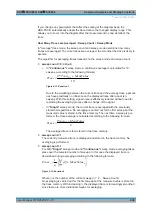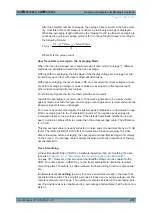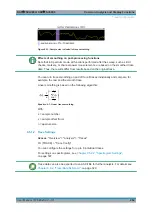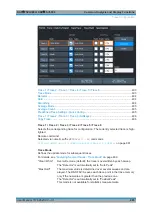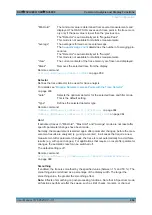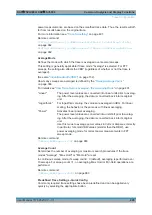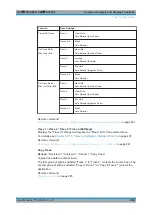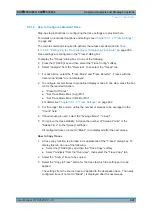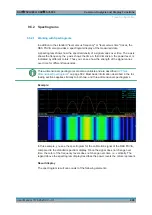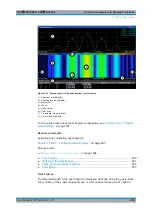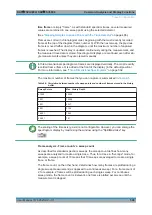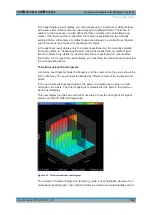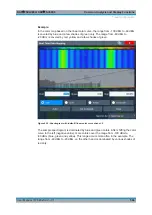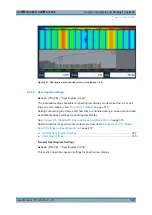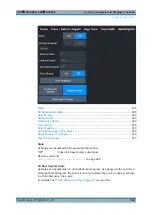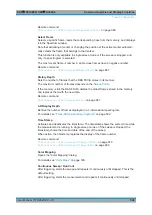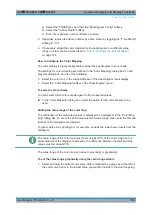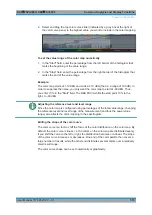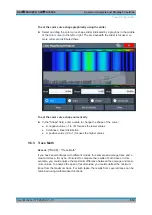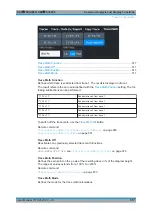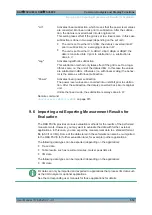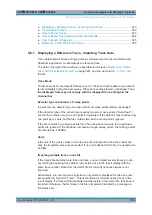
Common Analysis and Display Functions
R&S
®
FSVA3000/ R&S
®
FSV3000
504
User Manual 1178.8520.02 ─ 01
The color display is highly configurable to adapt the spectrograms to your needs. You
can define:
●
Which colors to use (Color scheme)
●
Which value range to apply the color scheme to
●
How the colors are distributed within the value range, i.e where the focus of the vis-
ualization lies (shape of the color curve)
The individual colors are assigned to the power levels automatically by the
R&S
FSV/A.
The Color Scheme
●
Hot
Uses a color range from blue to red. Blue colors indicate low levels, red colors indi-
cate high ones.
●
Cold
Uses a color range from red to blue. Red colors indicate low levels, blue colors
indicate high ones.
The "Cold" color scheme is the inverse "Hot" color scheme.
●
Radar
Uses a color range from black over green to light turquoise with shades of green in
between. Dark colors indicate low levels, light colors indicate high ones.
●
Grayscale
Shows the results in shades of gray. Dark gray indicates low levels, light gray indi-
cates high ones.
The Value Range of the Color Map
If the measured values only cover a small area in the spectrogram, you can optimize
the displayed value range so it becomes easier to distinguish between values that are
close together. Display only parts of interest.
The Shape and Focus of the Color Curve
The color mapping function assigns a specified color to a specified power level in the
spectrogram display. By default, colors on the color map are distributed evenly. How-
ever, to visualize a certain area of the value range in greater detail than the rest, you
can set the focus of the color mapping to that area. Changing the focus is performed
by changing the shape of the color curve.
The color curve is a tool to shift the focus of the color distribution on the color map. By
default, the color curve is linear. If you shift the curve to the left or right, the distribution
Trace Configuration

